30 Common Backyard Birds in Minnesota (With Pictures)
Last Updated on
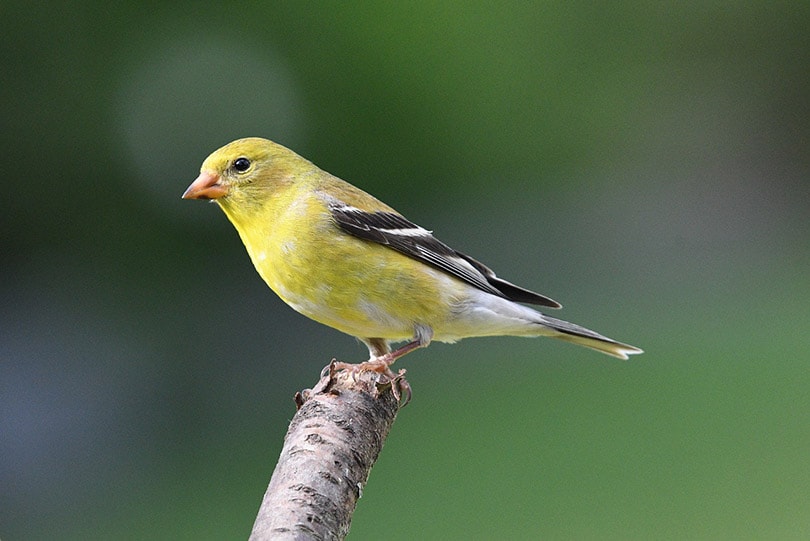
Minnesota is home to at least 246 avian species. Its geographical position leaves the possibility open for vagrant birds to visit the state. According to the Minnesota Department of Natural Resources (MN DNR), these sightings have bolstered the total number to 266. Of course, the species that you’ll see in your backyard at the feeder are a different story.
We’ve grouped each species into general lifestyle types: Perching birds, non-passerine land birds, waterfowl, and raptors. Minnesota perching birds make up the greatest number. Many have adjusted to being around people, giving you opportunities to see many of them.

The 30 Most Common Backyard Birds in Minnesota
1. American Crow (Corvus brachyrhynchos)

| Type: | Perching birds |
| Rarity: | Year-round resident |
| Habitat: | Forest edges, parks |
The American Crow is a bird that makes itself known, whether it’s picking at roadkill or outing a raptor in a tree. They are intelligent and vocal birds with an unmistakable call. Crows are highly opportunistic feeders and will eat just about anything.
2. American Goldfinch (Carduelis tristis)
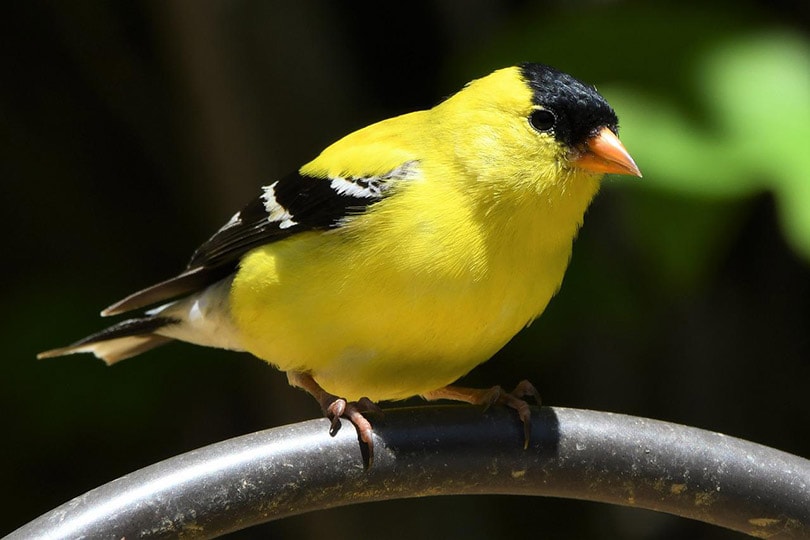
| Type: | Perching birds |
| Rarity: | Year-round resident in southern Minnesota |
| Habitat: | Open forests |
The American Goldfinch’s name applies more to a male’s coloring than a female’s. It feeds primarily on seeds, and its bright yellow plumage, combined with the undulating flight, makes it easy to identify this thistle-loving species.
3. American Robin (Turdus migratorius)
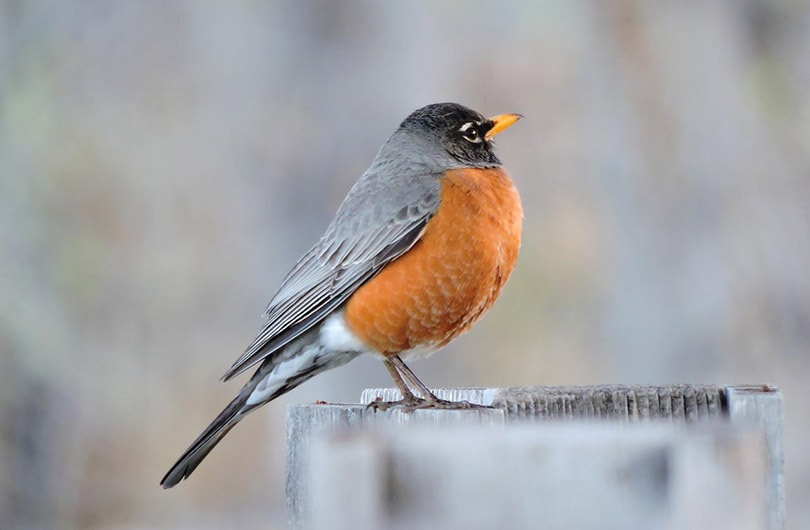
| Type: | Perching birds |
| Rarity: | Year-round resident except in northern Minnesota |
| Habitat: | Open forests, parks |
The American Robin is the quintessential sign of spring. Surprisingly, it’s a year-round resident in the state, except for the far northern regions. It is a ground forager that feeds primarily on insects and worms. However, American Robins also eat many fruits—sometimes to the point of intoxication.
4. Black-Capped Chickadee (Parus atricapillus)
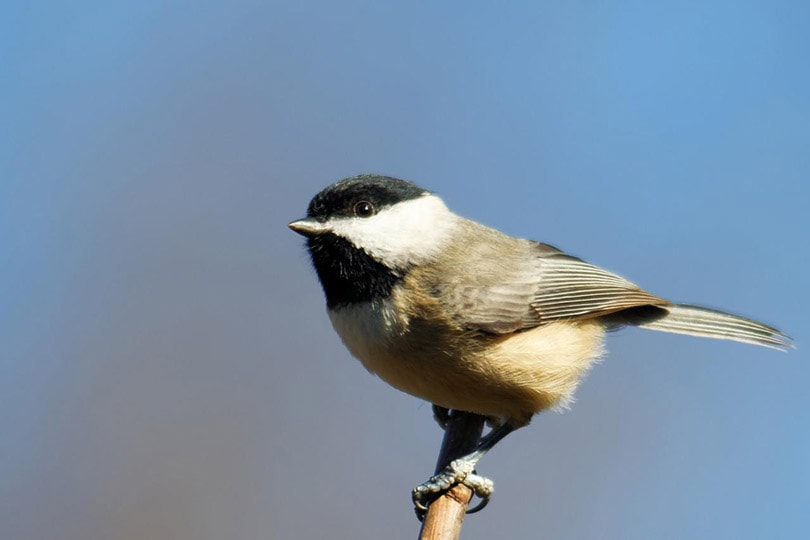
| Type: | Perching birds |
| Rarity: | Year-round resident |
| Habitat: | Parks, open woods |
The Black-Capped Chickadee is a small bird with a big voice. You’ll know you have some residents by its characteristic “chick-a-dee-dee-dee” call. It’s a frequent visitor to suet feeders, which is good because suet supports its high activity level.
5. Blue Jay (Cyanocitta cristata)
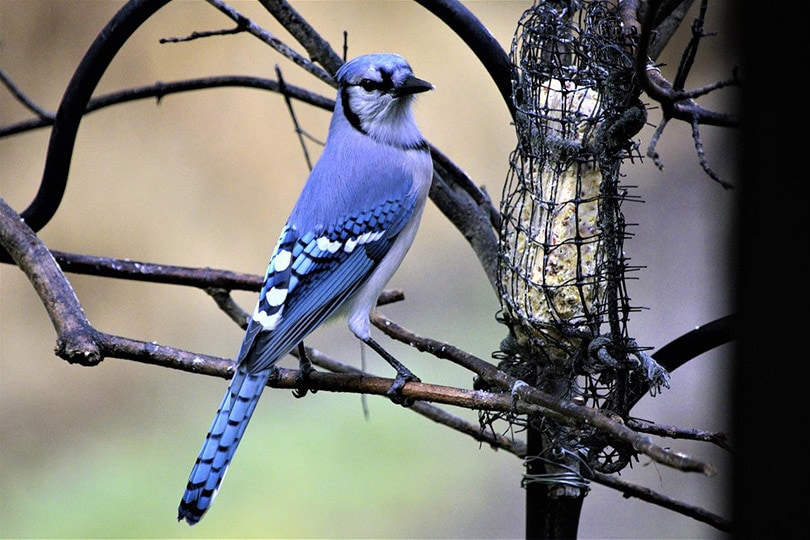
| Type: | Perching birds |
| Rarity: | Year-round resident and partially migratory |
| Habitat: | Mixed forests |
The Blue Jay makes its presence known with its big voice and excellent imitation of hawk calls. You may think there’s a resident Broadwing Hawk in your neighborhood when it’s actually this bird. Blue Jays are omnivores that eat nuts, fruits, and even eggs. It will also steal food from other animals.
6. Cedar Waxwing (Bombycilla cedrorum)

| Type: | Perching birds |
| Rarity: | Year-round resident in the entire state |
| Habitat: | Open forests, suburban gardens |
The Cedar Waxwing is a handsome bird with distinguishing red and yellow feather tips on its wings and tail. It also has a silky appearance from its gray-brown plumage. These birds are always on the move since their primary food is fruit.
7. Chipping Sparrow (Spizella passerina)
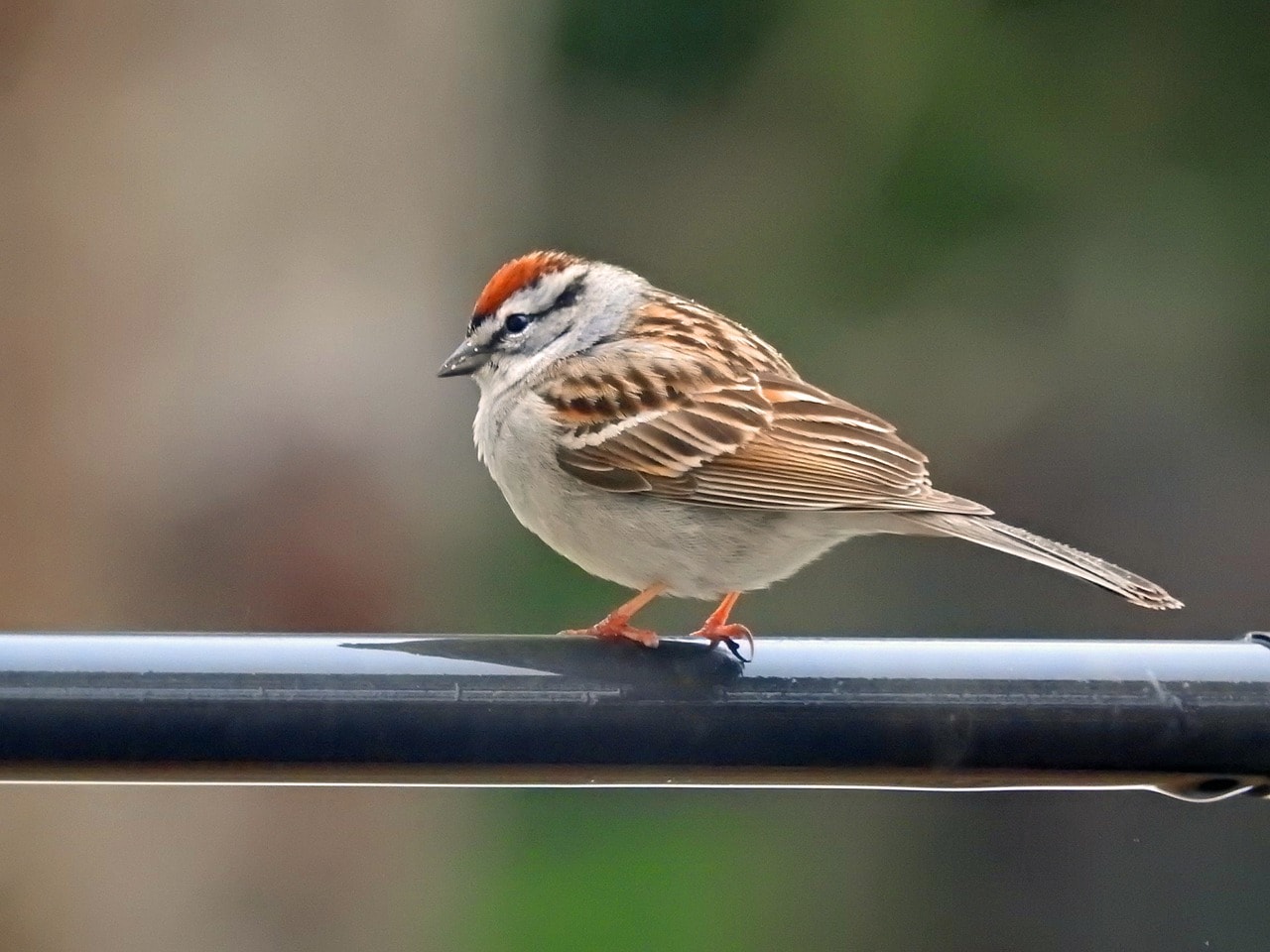
| Type: | Perching birds |
| Rarity: | Summer resident |
| Habitat: | Open forests |
The Chipping Sparrow gets its name from its distinguishing call. It sounds like an alarm call you’d hear with other birds. It is a summer visitor to Minnesota that primarily consumes grass seeds but supplements its diet with the occasional insect.
8. Common Grackle (Quiscalus quiscula)
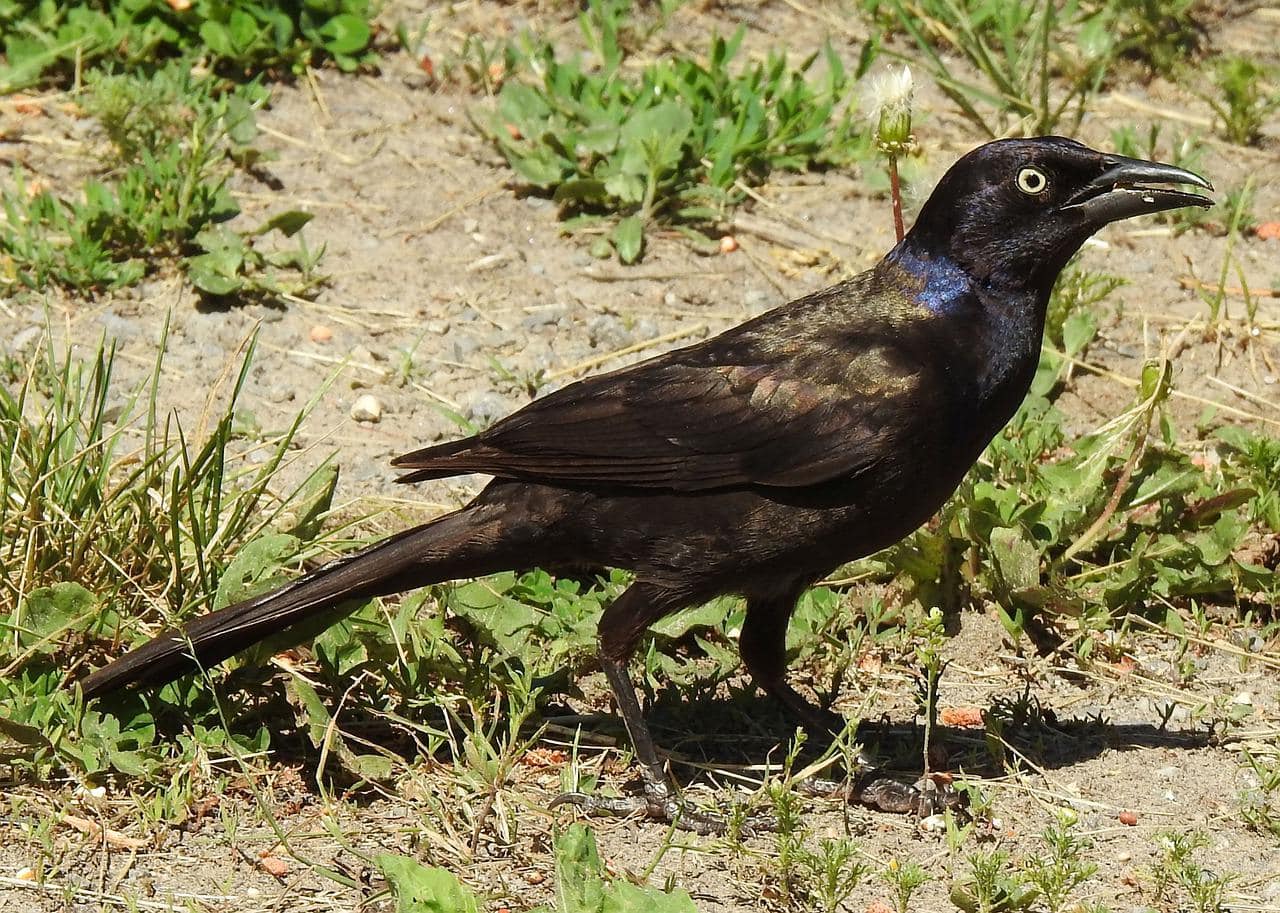
| Type: | Perching birds |
| Rarity: | Year-round resident in southern Minnesota |
| Habitat: | Open forests, farmland |
The Common Grackle is so well adapted to humans that it has become more of a pest than a welcomed backyard visitor. It is an opportunistic forager that won’t hesitate to raid crops. It is both social and cantankerous with other birds, especially Grackles.
9. Eastern Bluebird (Sialia sialis)

| Type: | Perching birds |
| Rarity: | Visitor during the breeding season |
| Habitat: | Open forests, farmland |
The Eastern Bluebird visits Minnesota during the breeding season that eats fruits and insects. Habitat encroachment took a heavy toll on the population. It has since recovered, making it one of the state’s conservation success stories. This bird arrives early in the breeding season and symbolizes a beautiful harbinger of spring.
10. Eastern Pewee (Contopus virens)

| Type: | Perching birds |
| Rarity: | Visitor during the breeding season |
| Habitat: | Coniferous and deciduous forests |
The Eastern Pewee lives up to its name, keeping its range contained to just west of the Mississippi River. It’s one of many birds with a name that represents its song. Interestingly, an ecological conflict exists between this species and the White-Tailed Deer because the deer disturb the forest canopy while foraging for food.
11. Eastern Phoebe (Sayornis phoebe)
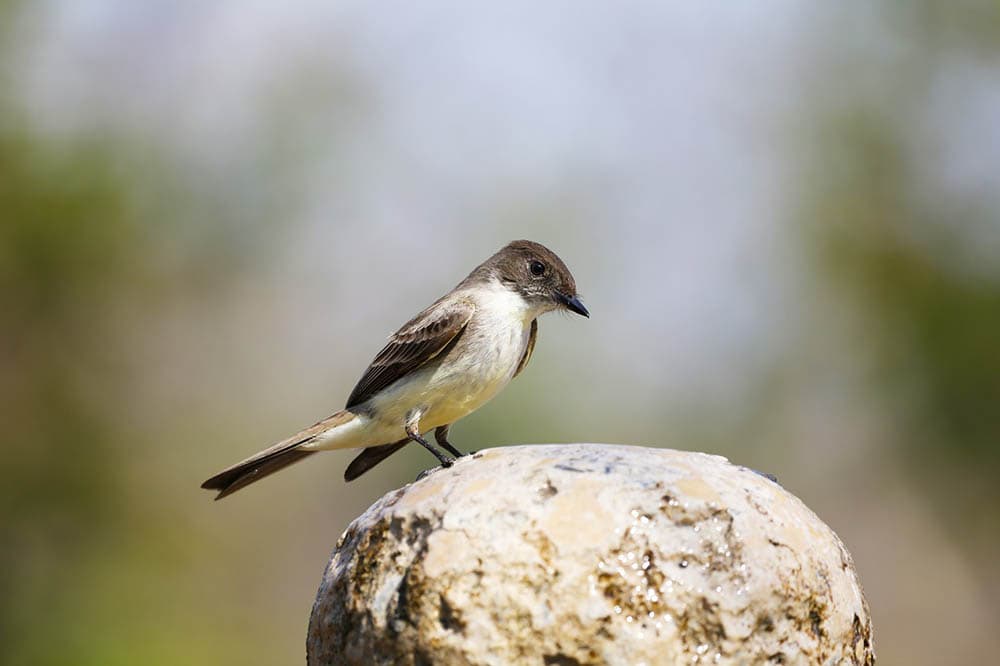
| Type: | Perching birds |
| Rarity: | Visitor during the breeding season |
| Habitat: | Open forests, quiet neighborhoods |
The Eastern Phoebe looks similar to our last entry, making definitive identification difficult. It’s more tolerant of humans than many birds. The Eastern Phoebe also returns to Minnesota very early in the season.
12. European Starling (Sturnus vulgaris)
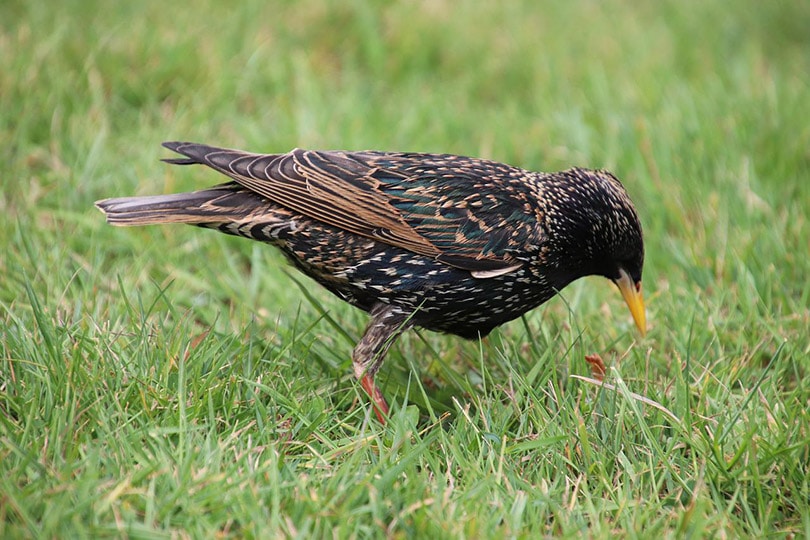
| Type: | Perching birds |
| Rarity: | Year-round resident in the entire United States |
| Habitat: | Small yards and urban areas |
The European Starling is probably one of the most widespread species globally, although it isn’t always a welcome visitor to our bird feeders. Its voracious feeding habits make it an enemy of farmers. These birds are also a carrier of some diseases, including histoplasmosis. In addition, it’s a vocal bird that often mimics other avian calls.
13. House Finch (Carpodacus mexicanus)
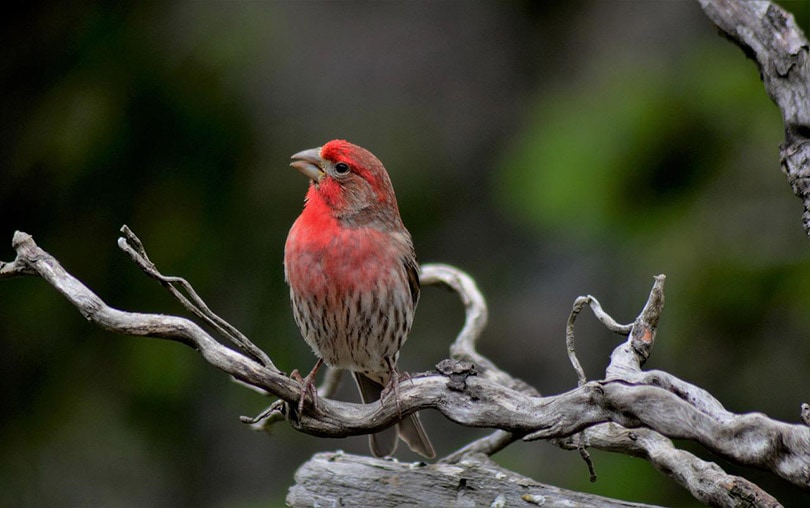
| Type: | Perching birds |
| Rarity: | Year-round resident in south to central Minnesota |
| Habitat: | Small yards and open forests |
The House Finch originally resided in the west before eventually becoming established farther east. It is a year-round resident in south to central Minnesota. A house finch is also a frequent feeder visitor. It’s a striking bird with the male’s stunning breeding plumage.
14. House Sparrow (Passer domesticus)

| Type: | Perching birds |
| Rarity: | Year-round resident in the entire United States |
| Habitat: | Small yards and patios |
Like the European Starling, you’ll find the House Sparrow just about anywhere that can support an omnivore bird. This species was introduced to the US in 1851 to help control caterpillar populations. Surprisingly, it tends only to live where humans are present and remains relatively absent from habitats untouched by people.
15. House Wren (Troglodytes aedon)

| Type: | Perching birds |
| Rarity: | Breeding season visitor in Minnesota |
| Habitat: | Open woodlands |
The House Wren lives happily with humans on farms, suburbs, and forest edges. It feeds primarily on insects, so it’s a bird that you’d want to have in your backyard. You can attract these birds to your backyard by hanging a birdhouse meant for this species. The House Wren’s true claim to fame is its melodious songs.
16. Northern Cardinal (Cardinalis cardinalis)
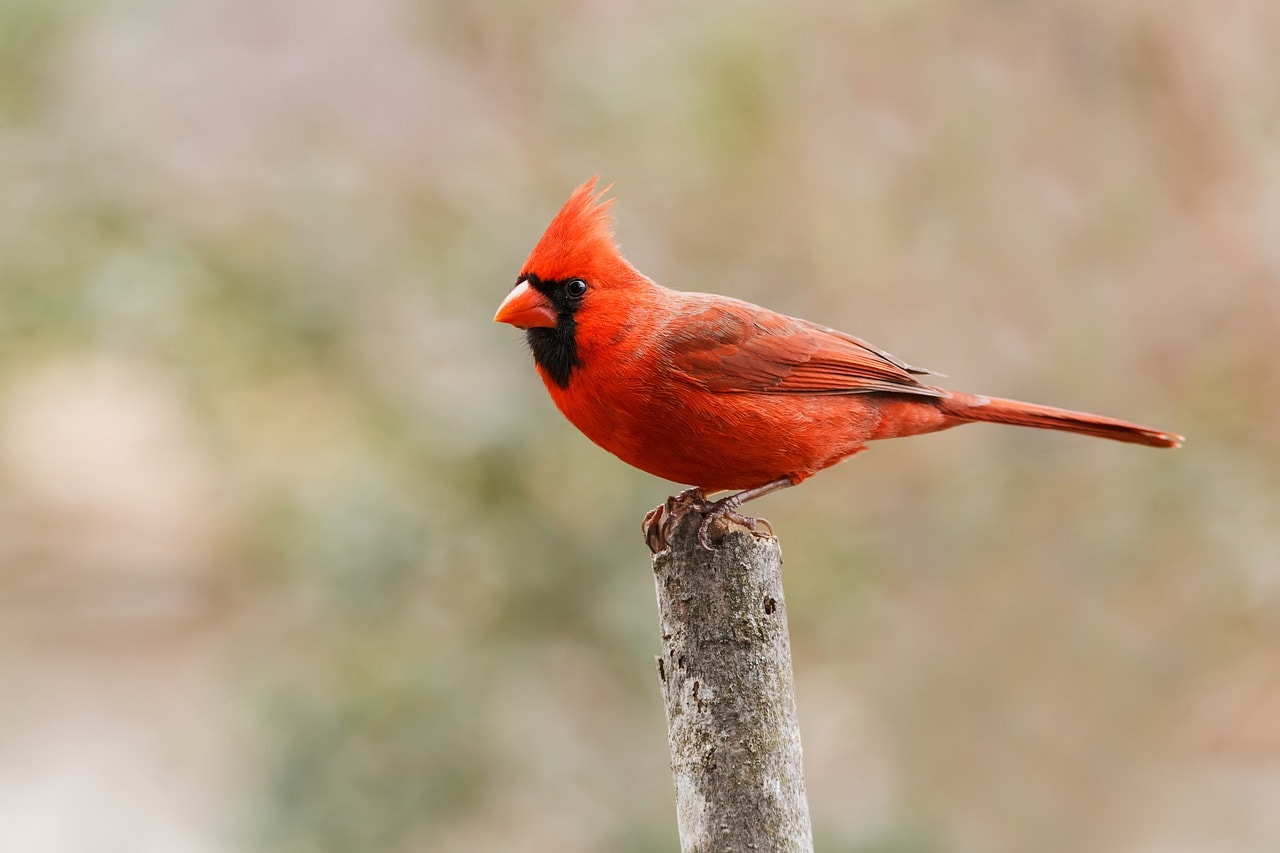
| Type: | Perching birds |
| Rarity: | Year-round resident |
| Habitat: | Small yards and patios |
The Northern Cardinal is one of the more popular red birds in Minnesota. Given how ubiquitous they are today, it’s hard to believe that they were once in danger of extinction in the state. You can easily attract them to your yard with a window bird feeder.
17. Northern Junco (Junco hyemalis)
https://www.instagram.com/p/CKY_DBMAMIu/
| Type: | Perching birds |
| Rarity: | Visitor during the non-breeding season |
| Habitat: | Brushy cover and open woodlands |
The Northern Junco isn’t a year-round resident of Minnesota. It usually shows up at the end of the breeding season and leaves when the climate gets warmer. It nests and forages on the ground. You often see this species scavenging below your bird feeders, looking for cast-off seeds.
18. Tufted Titmouse (Baeolophus bicolor)

| Type: | Perching birds |
| Rarity: | Year-round resident in the southeastern part of the state |
| Habitat: | Deciduous woodlands |
The Tufted Titmouse is a sweet-looking bird with a cute crest and big, dark eyes. They tend to stick close to home as long as insects are available. Its call is distinctive with its “Peter! Peter! Peter!” vocalization—it’s a big sound for a small bird. The Tufted Titmouse is also a cavity-nester with a sweet tooth for peanuts.
19. White-Breasted Nuthatch (Sitta carolinensis)

| Type: | Perching birds |
| Rarity: | Year-round residents |
| Habitat: | Wooded habitats |
You’re most likely to see the White-Breasted Nuthatch running up and down tree trunks while upside down. This is because they use the bark to help them open seeds. These birds usually stay put and are year-round residents in Minnesota. White-Breasted Nuthatches are vocal during the spring with a call that sounds like it’s laughing.
20. Downy Woodpecker (Picoides pubescens)
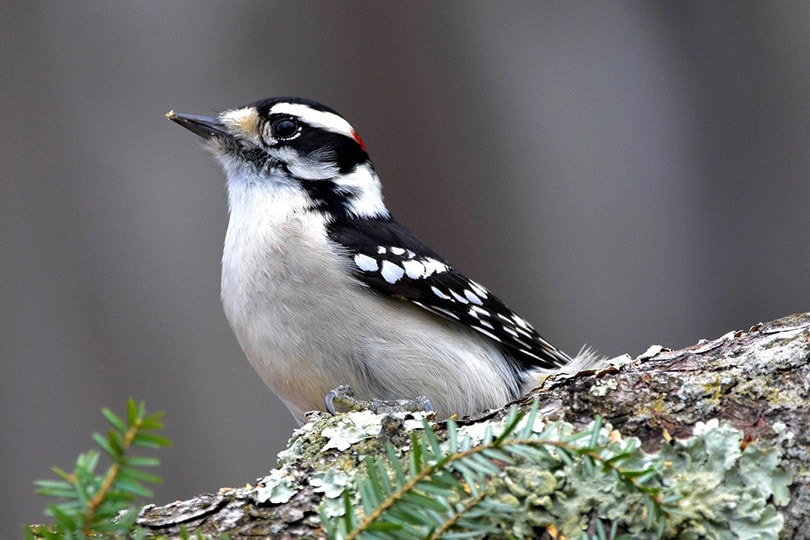
| Type: | Non-passerine land birds |
| Rarity: | Year-round resident |
| Habitat: | Open deciduous forests |
The Downy Woodpecker is one of nine woodpecker species in Minnesota. It’s a small bird with a big personality. Downy Woodpeckers love to visit local suet feeders. It uses drumming to find prey and communicate with others of its kind. Surprisingly, it doesn’t sing and uses chirps and body signals to interact with other species.
21. Hairy Woodpecker (Picoides villosus)
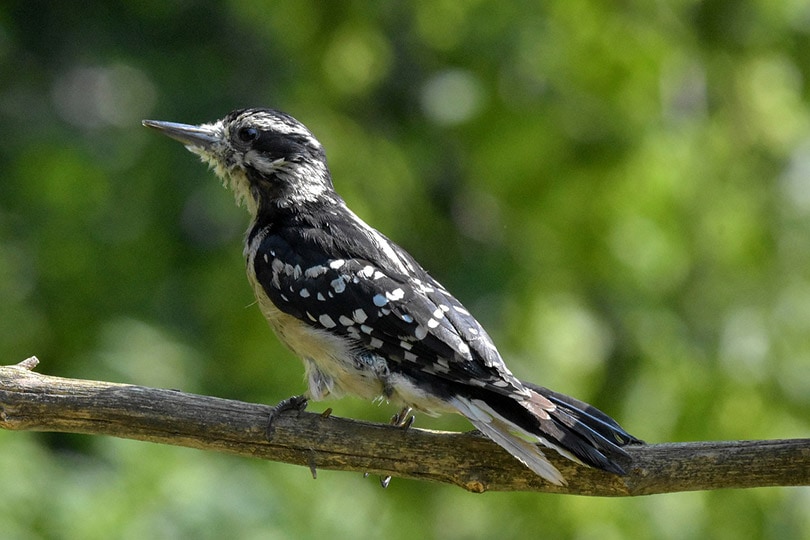
| Type: | Non-passerine land birds |
| Rarity: | Year-round resident |
| Habitat: | Forested areas with dead trees |
The Hairy Woodpecker looks similar to our previous species, except it’s larger with slight plumage differences. Although it prefers woodlands instead of urban settings, it is a year-round resident in Minnesota. Like the Downy Woodpecker, the male has a bright red cap to distinguish it from the female.
22. Mourning Dove (Zenaida macroura)
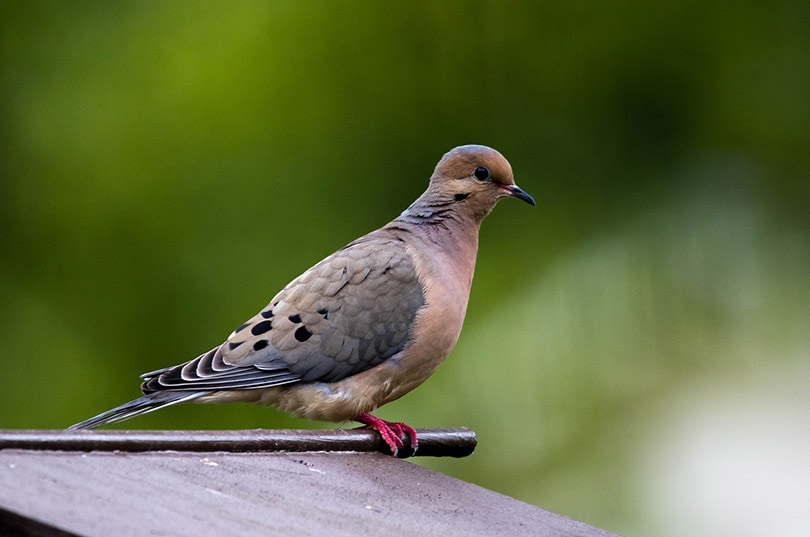
| Type: | Non-passerine land birds |
| Rarity: | Breeding season visitor |
| Habitat: | Open forests |
The Mourning Dove gets its name from its seemingly sad call. It’s an adaptable bird that lives well with humans, even though it is a game species in several states, including Minnesota. It’s worth noting that it has one of the earliest breeding seasons because of its migratory status.
23. Pileated Woodpecker (Dryocopus pileatus)
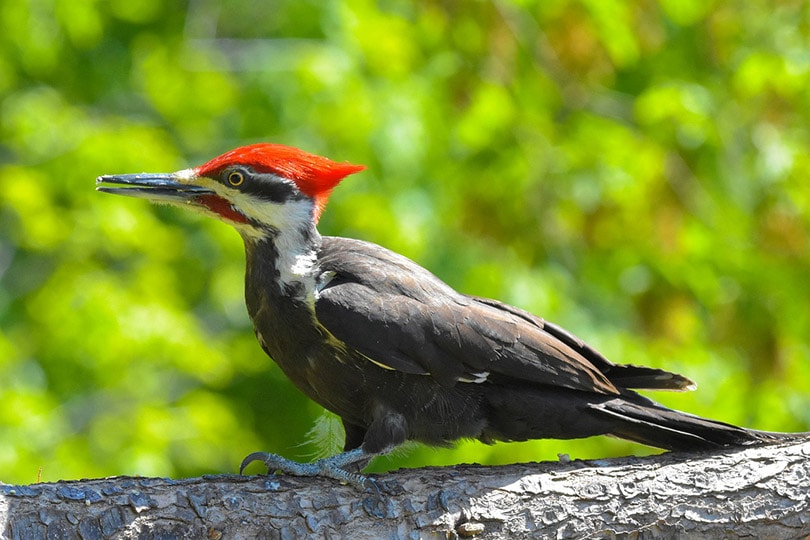
| Type: | Non-passerine land birds |
| Rarity: | Year-round resident |
| Habitat: | Coniferous or deciduous forests |
The Pileated Woodpecker epitomizes the Woody cartoon character with a size and voice that fits it. These birds are often destructive, mainly because of the large grooves it drills into tree trunks and utility poles. It’s easy to spot, and one you likely see when you’re spending time outdoors.
24. Ruby-Throated Hummingbird (Archilochus colubris)

| Type: | Non-passerine land birds |
| Rarity: | Breeding visitors in the entire state |
| Habitat: | Deciduous and pine forests |
The Ruby-Throated Hummingbird is surprisingly active despite its small size. You may mistake them for a large bumblebee with its fast-moving wings. These hummingbirds feed primarily on floral nectar, so a feeder is an excellent way to attract them to your backyard.
- Related Read: 3 Types of Hummingbirds in Mississippi
25. Canada Goose (Branta canadensis)

| Type: | Waterfowl |
| Rarity: | Year-round residents in some areas |
| Habitat: | Areas near water |
The is a year-round resident wherever there is open water. It easily adapts to humans since it lives near golf courses, lake houses, and parks. There are 11 subspecies that exist with varying ranges throughout the state. Most are omnivores that feed on vegetation and insects.
26. Mallard (Anas platyrhynchos)

| Type: | Waterfowl |
| Rarity: | Year-round resident in the southern half of the state |
| Habitat: | Lakes and ponds |
The Mallard is probably one of the most recognizable of all waterfowl species. While it is a polygamous species, many homeowners report seeing the same pair visiting their properties every year. You’ll see them in both wild habitats and populated areas.
27. Wood Duck (Aix sponsa)

| Type: | Waterfowl |
| Rarity: | Year-round resident in southern Minnesota and areas with open water |
| Habitat: | Wooded lakes and ponds |
The Wood Duck is a bit flightier than other waterfowl species and isn’t as tolerant of humans. Its plumage is striking, making it seem more like an exotic bird than a resident. You’ll often see Wood Ducks close to forests with oak trees since they often nest in them.
28. Barred Owl (Strix varia)

| Type: | Raptor |
| Rarity: | Year-round resident |
| Habitat: | Forests and wooded swamps |
You’re more likely to hear a Barred Owl than see one. One interesting thing about this bird is its distinctive call at dusk, filled with loud hooting and eerie wails. These owls are typically solitary except during the mating season.
29. Cooper’s Hawk (Accipiter cooperii)

| Type: | Raptor |
| Rarity: | Year-round residents in most of the United States |
| Habitat: | Deciduous and mixed forests |
The Cooper’s Hawk is most likely a resident or visitor to your backyard if you feed songbirds since they are this raptor’s usual prey. However, a feeder only sets the stage for the predators to follow. You’ll see the Cooper’s Hawk waiting to make the kill in nearby perches before they swoop down and snatch their dinner.
30. Red-Tailed Hawk (Buteo jamaicensis)

| Type: | Raptor |
| Rarity: | Year-round resident |
| Habitat: | Small yards and patios |
The Red-Tailed Hawk is a raptor you’ll often see throughout the entire year. It spends a lot of time perching on telephone poles or trees on the forest’s edge. Red-Tailed Hawks are one of the most recognizable brown birds in Minnesota and are also one of the largest hawks in the state that often weighs in at nearly 4 pounds.

In Conclusion
As you’ve seen, Minnesota has a vast diversity of birds. The chances are you’ll see all these species no matter where you live in the US. That’s particularly true if you birdwatch near wetlands or lakes. Of course, the state has an abundance of the latter, given its nickname of the “Land of 10,000 Lakes.”
Featured Image Credit: Veronika_Andrews, Pixabay
Table of Contents
- The 30 Most Common Backyard Birds in Minnesota
- 1. American Crow (Corvus brachyrhynchos)
- 2. American Goldfinch (Carduelis tristis)
- 3. American Robin (Turdus migratorius)
- 4. Black-Capped Chickadee (Parus atricapillus)
- 5. Blue Jay (Cyanocitta cristata)
- 6. Cedar Waxwing (Bombycilla cedrorum)
- 7. Chipping Sparrow (Spizella passerina)
- 8. Common Grackle (Quiscalus quiscula)
- 9. Eastern Bluebird (Sialia sialis)
- 10. Eastern Pewee (Contopus virens)
- 11. Eastern Phoebe (Sayornis phoebe)
- 12. European Starling (Sturnus vulgaris)
- 13. House Finch (Carpodacus mexicanus)
- 14. House Sparrow (Passer domesticus)
- 15. House Wren (Troglodytes aedon)
- 16. Northern Cardinal (Cardinalis cardinalis)
- 17. Northern Junco (Junco hyemalis)
- 18. Tufted Titmouse (Baeolophus bicolor)
- 19. White-Breasted Nuthatch (Sitta carolinensis)
- 20. Downy Woodpecker (Picoides pubescens)
- 21. Hairy Woodpecker (Picoides villosus)
- 22. Mourning Dove (Zenaida macroura)
- 23. Pileated Woodpecker (Dryocopus pileatus)
- 24. Ruby-Throated Hummingbird (Archilochus colubris)
- 25. Canada Goose (Branta canadensis)
- 26. Mallard (Anas platyrhynchos)
- 27. Wood Duck (Aix sponsa)
- 28. Barred Owl (Strix varia)
- 29. Cooper’s Hawk (Accipiter cooperii)
- 30. Red-Tailed Hawk (Buteo jamaicensis)
- In Conclusion
About the Author Chris Dinesen Rogers
Chris has been writing since 2009 on a variety of topics. Her motto with all of her writing is “science-based writing nurtured by education and critical thinking.” Chris specializes in science topics and has a special love for health and environmental topics, and animals of all shapes and sizes.
Related Articles:
Monocular vs Telescope: Differences Explained (With Pictures)
10 Types of Hummingbirds in Arkansas (With Pictures)
8 Types of Hummingbirds in Nebraska (With Pictures)
5 Types of Hummingbirds in Idaho (With Pictures)
3 Types of Hummingbirds in Mississippi (With Pictures)
8 Types of Hummingbirds in Kansas (With Pictures)
5 Types of Hummingbirds in West Virginia (With Pictures)
5 Types of Hummingbirds in Ohio (With Pictures)
